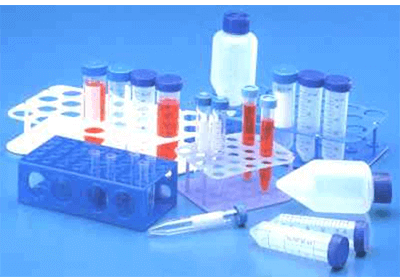What Is a Centrifuge Tube?

Centrifuge tubes, also known as stitches, are containers used in experiments and tests in which liquids are separated from each other or solids and liquids are separated using a centrifuge.
Glass or plastic is used as the material, and you can choose one that is resistant to impact and strength, one that is cold- or heat-resistant and suitable for temperature changes, or one that is chemical-resistant, depending on the intended use.
There are also those with scales, those that can be written on the container, and those with a tight-sealing cap.
Uses of Centrifuge Tubes
1. Use With Centrifuges
A centrifuge is used to collect insoluble substances as precipitates by centrifuging a suspended sample in a centrifuge tube, which has the shape shown in Figure 1. The centrifuge is a device that rotates a rotor, to which the centrifuge tube can be set, at high speed. Centrifugal force can separate liquids and solids, or liquids with different specific gravities.
2. Use for Sample Collection and Preservation
Centrifuge tubes with a screw-type cap structure are sometimes used to collect, transport, and store samples that require delicate handling due to their excellent sealing and preservation properties.
In the field of biochemical experiments, they are also used to separate cells collected as precipitates by centrifugation or to extract nucleic acids from cells and can be used to preserve and fine-tune each component.
Characteristics and Principles of Centrifugation Using a Centrifuge Tube
1. Separation of Liquid Components With Different Specific Gravities
Centrifugal separation is the separation of substances with different specific gravities by centrifugal force. The centrifugal force generated by high-speed rotation can reduce the time required for the sedimentation of substances that would otherwise take a long time to settle naturally. Since liquid components with heavier specific gravity settle faster than those with lighter specific gravity, multiple liquid components with different specific gravity can be separated as liquid phases in a centrifuge tube according to their specific gravity.
2. Separation of Insoluble Material From Suspension
When a substance is dispersed in a liquid without dissolving, it is called a suspension. To separate insoluble components from such a sample, the suspension is injected into a centrifuge tube and subjected to centrifugal separation, where only the insoluble components are obtained as precipitates. Therefore, this method is used to recover minute amounts of fine insoluble substances contained in the suspension. For example, in experiments using microorganisms or cells, it is used to separate only the cells from the culture medium.
3. Emulsion Separation
A liquid in a state of dispersion of immiscible liquids such as water and oil is called an emulsion. Familiar examples include milk and mayonnaise. Centrifugal separation is also used to separate each liquid component from such liquids.
Structural Features of Centrifuge Tubes
1. Strength
The main uses of centrifuge tubes are to seal the sample inside the tube and to use it as a container to set the sample in a centrifuge, which involves strong physical stimulation. Therefore, the centrifuge tube has a structure that can withstand centrifugal force, is hermetically sealed, and has excellent strength to prevent cracking even under load.
2. Shape
The centrifuge tube has a narrow tip to allow insoluble components to precipitate at high density and in a narrow surface area. Thanks to this unique shape, insoluble components can be efficiently collected at the bottom of the centrifuge tube. There are various types of centrifuge tubes on the market, some of which have scales engraved on the tube or are made of a material that is easy to write on the sides or cap to prevent the scales from disappearing due to rubbing, etc. Some of them have scales engraved on the tube molding.